

Jenny’s stonecrop Sedum reflexum is an easy-to-grow outdoor succulent with needle-shaped leaves, often blue-green.
Key Sedum reflexum facts:
Name: Jenny’s stonecrop, Sedum rupestre
Family: Crassulaceae
Type: Perennial succulent
Height: about 8 inches (20 cm)
Exposure: bright to partial shade
Soil: light, well-drained
Difficulty: easy – Foliage: evergreen – Blooming: summer
Leaves growing on stems give this plant a Christmas tree vibe. With fast growth, Jenny’s stonecrop forms a mat as it grows in soil. If you grow it in a container, expect the almost creeping stems to trail downwards.
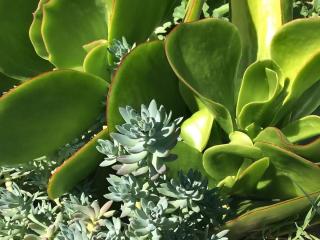 Leaves of Jenny’s stonecrop are usually green, but they can turn from yellow to blue-green, and even get a rosy tint in cold weather. Come summer, you’ll see yellow flowers.
Leaves of Jenny’s stonecrop are usually green, but they can turn from yellow to blue-green, and even get a rosy tint in cold weather. Come summer, you’ll see yellow flowers.
Not too picky about light, Sedum reflexum can handle full sun up to partial shade.
Some varieties are rock garden superstars for their foliage colors. Choose any of several varieties for landscape design. They need little maintenance and won’t overshadow neighboring plants.
When planting Jenny’s stonecrop, which is often wider than it’s tall (12-20 inches in diameter, or 30-50 cm for 6-8 inches in height, or 15-20 cm), leave room around it for unrestricted growth.
The main planting rule is drainage of the substrate.
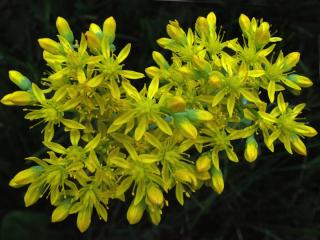 Jenny’s stonecrop is a hardy plant that should only be planted outdoors. It can’t stand the constant indoor heat of a living room. But it’s just fine with temperatures of 5°F (-15 °C). Its cold resistance is very good. Take advantage of it.
Jenny’s stonecrop is a hardy plant that should only be planted outdoors. It can’t stand the constant indoor heat of a living room. But it’s just fine with temperatures of 5°F (-15 °C). Its cold resistance is very good. Take advantage of it.
Careful: not all species of the Sedum (stonecrop) genus are this tolerant. The some 400 species of the genus are distributed worldwide and come from varied habitats, from Japan and China, North America, Europe, and even Siberia.
Idea: Sedum reflexum is perfect for gardeners in xeric (arid to semi-arid) areas or those who want to replace their lawn with a groundcover plant. Jenny’s stonecrop is also a great addition to vertical gardens or green roofs. It can even outcompete weeds.
Info: for shorter varieties, you can usually just place the plant on the ground (which should be moist at that time). Yellow flowers (up to 1/2 inch in diameter, or 1.3 cm) shaped like stars appear in mid-summer on floral stems (terminal cymes) that are 6-8 inches tall (15-20 cm).
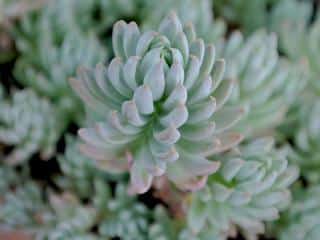 Watering the Young Sprouts:Growing reflexed stonecrop requires regular watering, which aids young plants in establishing roots and spreading quickly. But mature reflexed stonecrop can stand a few months of drought.
Watering the Young Sprouts:Growing reflexed stonecrop requires regular watering, which aids young plants in establishing roots and spreading quickly. But mature reflexed stonecrop can stand a few months of drought.
Once Matured:Sedum reflexum has watering needs typical of a succulent. It’s best to use the “soak and dry” method, letting the soil dry out completely between watering sessions.
Maintenance Throughout the Seasons:Get rid of wilted flowers and stems to keep the plant from wasting energy – it’ll bloom even better! In winter, leave it outside. In fact, many hardy Sedum species aren’t available or are shipped semi-dormant from October to March. The best selection of Sedum is available from April to September.
Practical Info: When growing Sedum reflexum, keep in mind that these plants require very little attention or care. They’ll thrive where many other plants grow, but do just as well in less hospitable areas.
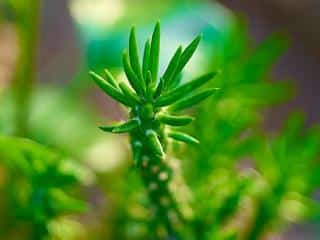 Propagation is very easy and prolific, though not from seed, but by cuttings or dividing the clumps. Leaf cuttings (a technique for some succulents) don’t work with this species with thin leaves.
Propagation is very easy and prolific, though not from seed, but by cuttings or dividing the clumps. Leaf cuttings (a technique for some succulents) don’t work with this species with thin leaves.
To take a stem cutting for propagation, use a sterile and sharp knife or pair of scissors. Remove a stem from the main plant and let it harden for several days before placing it atop well-drained soil. Water whenever the soil is completely dry. If you choose to propagate by hand, cut 2 inches (5 cm) or more from the top of a stem and transplant it to re-root.
Dividing clumps made by stonecrop involves pulling out the clumps with a digging fork. Break up the obtained clump to have several small plants. Replant as is.
Though never killed by actual diseases, too much water can kill even mature plants. Make sure water can drain away.
Our friend, Sedum reflexum, also goes by the name of Sedum rupestre. It’s not a toxic plant, so no worries there. You’ll find an amazing array of varieties for this botanical species (some are more rare than others), like:
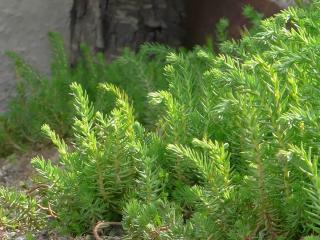 Sedum reflexum ‘Angelina’ with its shiny golden yellow leaves;
Sedum reflexum ‘Angelina’ with its shiny golden yellow leaves;